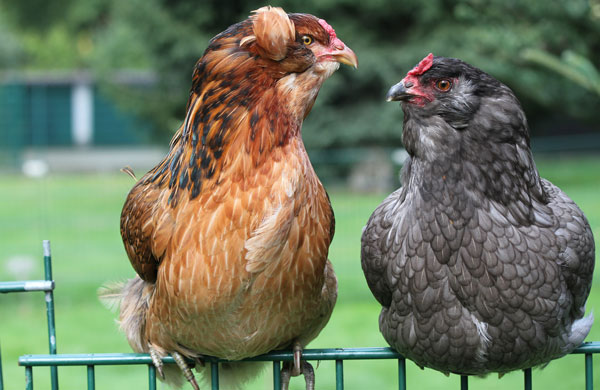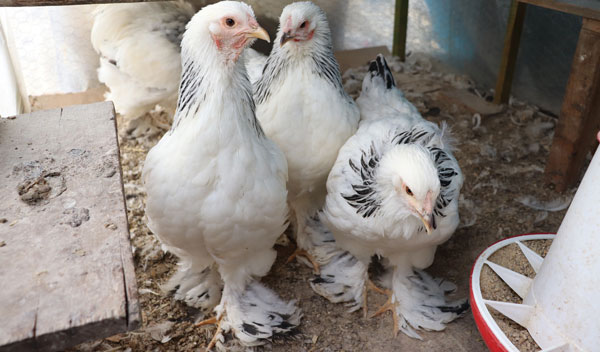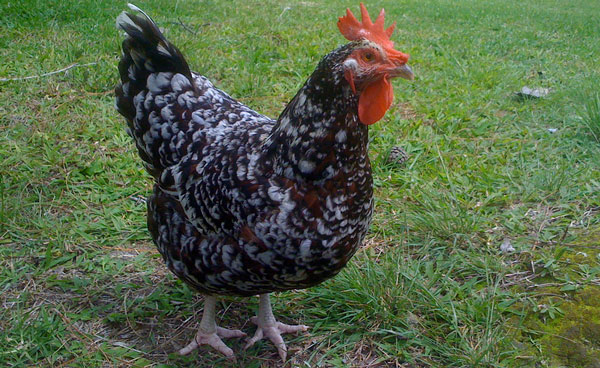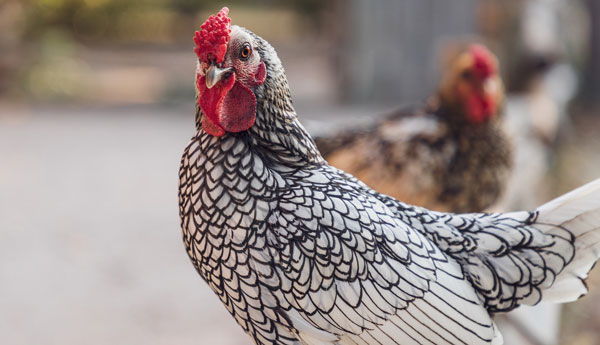
A topic we’ve covered regularly on this site, though perhaps not regularly enough, is that of poultry. Probably the most common “gateway stock” for budding homesteaders, chickens are relatively simple to care for, easy to acquire, and can be used for either meat or eggs. Read on for the first in what will be an irregularly running series with multiple installments, cataloguing the characteristics of various popular chicken breeds.

Araucanas
What good is writing stuff if you can’t put your own favorites front and center?! A South American native, first documented in Chile in 1914, the Araucana is one of those fun breeds that lays multicolored eggs–some green and some blue. These chickens stand very upright, with tufts of feathers protruding from their cheeks, and short tail feathers. Color ranges from black, to dark red, to silverish-white to gold, with black or blue legs. Friendly, non-aggressive and surprisingly good fliers (for chickens), araucanas excel at foraging and have a high resistance to cold weather. Expect around 225 mid-sized eggs from these birds in an average year.

Brahmas
With feathered legs and feet, Brahmas are a very old and very cherished breed. Known as the King of Chickens, the Brahma has been used for both meat and eggs, though I tend to keep mine solely for the latter purpose. Coming in both Dark and Light varieties upon their 1874 introduction to the American Poultry Association, the Buff Brahma was later admitted in 1924. A large bird, the Brahma stands around 30 inches, sporting a pea comb, a forehead overhanging its eyes, and a short, strong beak. Light birds are white, with grayish undertones and black striping around the hackles and saddle. Tail feathers are also black. Dark birds have a solid black body. Males are decorated with silver striping in the aforementioned areas, and solid silver on their shoulders and breast. Females are grey, with black and grey hackles, laced with white. Buff birds are patterned similar to White ones, with a buff, instead of white base. Brahmas will yield around 180 large brown eggs per year.

Speckled Sussex
As you can likely tell by the name, Speckled Sussex are an old English favorite, thought to have originally been brought to the island by the Romans themselves. Another dual-purpose breed, Speckled Sussex grow more like their name as they mature. As chicks, they are colored a reddish-brown, that darkens into white- and black-spotted mahogany. With every molt, the more spots will appear. Curious, friendly and intelligent (you know, for bird-brains), these chickens are prolific layers, yielding 200-300 eggs a year.

Silver Laced Wyandotte
The original Wyandotte breed, this is a quintessentially American bird, being the first bred on this soil to serve dual purposes, and named after the Wyandotte Indian Nation. A large bird with a broad frame, Wyandottes weigh in around 8 pounds for roosters, and six for hens. Silver Laced Wyandottes are mostly white, with feathers outlined in black, lending to that unique silvery appearance. The one exception is their rear, which is quite black. Calm and docile with people, Wyandottes have a dominant streak when it comes to dealing with other birds. They enjoy free ranging, and foraging for their own bugs and seeds. Like Auracanas, a good covering of feathers makes them tolerate colder climes quite well. Expect around 225 eggs per year from these ‘merican birds.
Well that’s all the room we have today folks. Hope you’ve enjoyed hearing about these first few breeds of egg-bearers. Tune in eggain in the not so distant future, when we’ll profile a few more popular breeds.
A humble homesteader based in an undisclosed location, Lars Drecker splits his time between tending his little slice of self-sustaining heaven, and bothering his neighbors to do his work for him. This is mainly the fault of a debilitating predilection for fishing, hunting, camping and all other things outdoors. When not engaged in any of the above activities, you can normally find him broken down on the side of the road, in some piece of junk he just “fixed-up.”

Thomas F Stalnaker says
Mr. Drecker in your future post would it be possible to state which of these breeds are most likely to go broody.
Ruben Maurice Garcia says
this article was very interesting, I didnt know about these chickens, thank you.